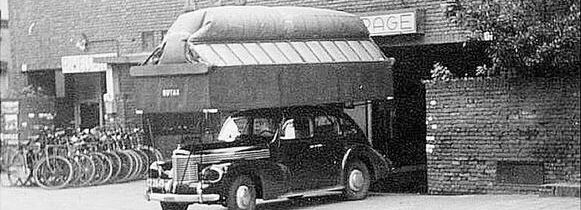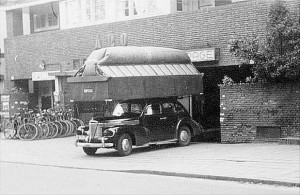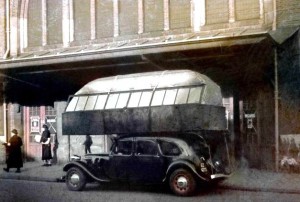A Natural Gas History
Humans have been using natural gas for thousands of years, in fact, the Chinese are believed to have used it as early as 500 b.c. to boil and purify water. Natural gas was used to fuel streetlights as early as 1785, and was the primary source of light during the 19th century. The invention of the electric light bulb in 1879 then forced natural gas companies to find other uses for the resource, and as a result, natural gas has become a very popular source of energy. Click here for a more complete history of natural gas.
Natural Gas History for auto’s
Natural Gas vehicles have been documented as early as the 1930’s, although it is unclear exactly when, or who, invented them. The first Natural Gas vehicles ran on uncompressed gas, and were called Gas Bag vehicles. These vehicles were used as a necessary way to combat a gasoline shortage during World War I, and even more so during World War II. Here is an excellent little article about them.
The first Natural Gas cars had a wood, or metal frame mounted to the roof and attached to the bumpers, with an enormous, unwieldy balloon for a gas “tank”. These first vehicles attracted plenty of attention, and clearly had less than ideal aerodynamics.
CNG tanks are still notoriously big, taking up about twice as much space as gasoline tanks for the equivalent amount of fuel. This can be discouraging, but we have come a long way and are continuing to improve.
Advances
Over the past forty years Natural Gas tanks have seen four major increases in pressure. Going from, 2000 psi, to 2400, to 3000, and most recently to 3600 psi. As you can imagine, with each increase in pressure it becomes more economical to transport and use in vehicles. The industry is now looking at using charcoal to adsorb the CNG, which makes it possible to store the same amount of CNG, under lower pressures, or more fuel at the same amount of pressure. There are also new tanks being created that are made to work under pressures of 5800 psi. We are sure there will be many more exciting technological advances in the years ahead, making CNG an even more viable option.
Today there are more than 14.8 million Natural Gas vehicles on the road, but for various reasons CNG hasn’t caught on as well in the US, with only 120,000 vehicles in America. We hope to see this change in the near future. As believers in CNG we would like to see every vehicle owner using an abundant American fuel while saving money, as well as driving with a cleaner and safer burning fuel.
Have any thoughts to add? Share them in the comments below!




